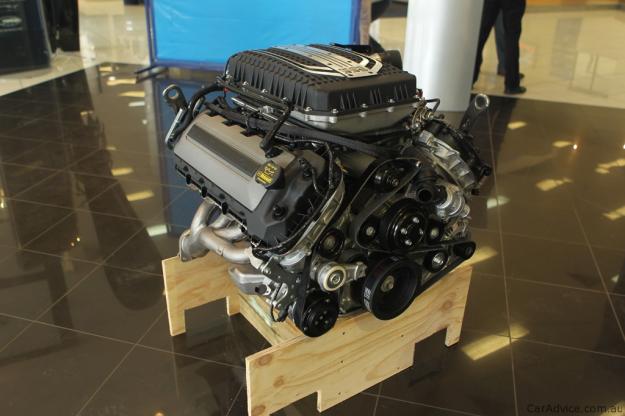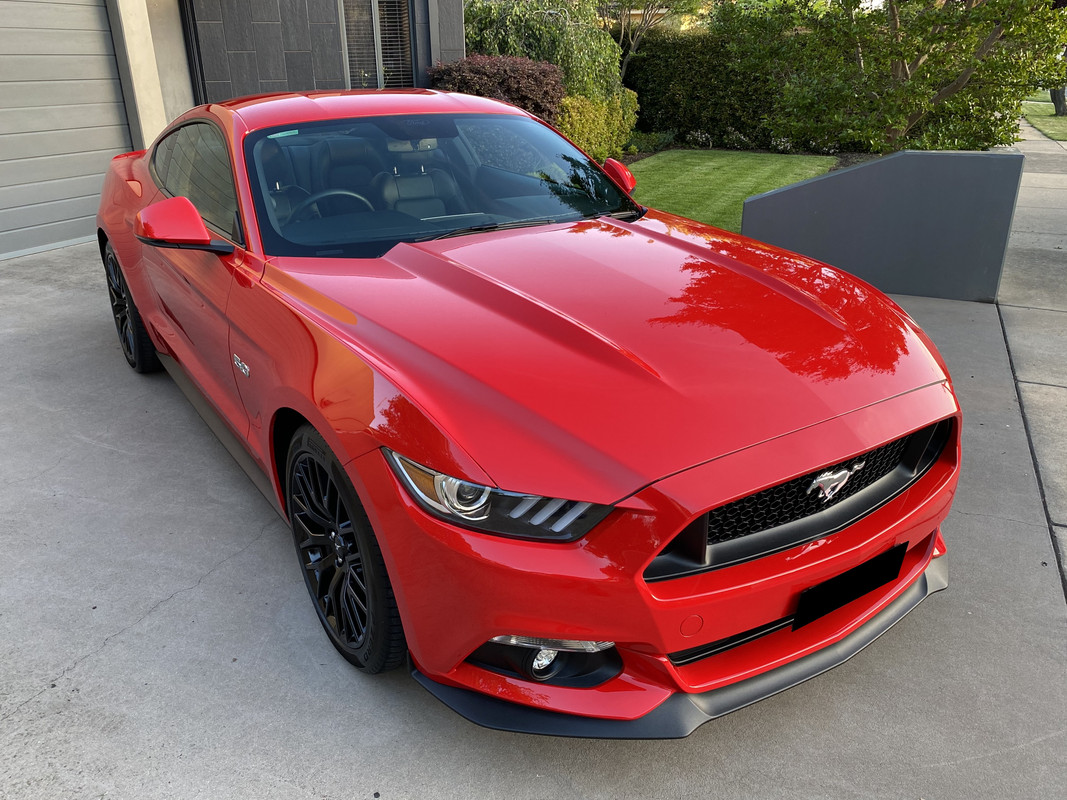I can’t remember any specs of that, but mentioned cool crisp air I’m guessing forced induction. What kind of power numbers does it put out? Beautiful ride.
Sent from my iPhone using Tapatalk
First of all, apologies for the coming post. I know I've covered this multiple times on this forum, but out of all my cars, the XR8 has the most "story" behind it.
Back in the late 2000's, Ford's Australian performance arm (FPV) was in need of a new engine to replace the old 5.4 quad cam V8 to meet new emission standards. Ford's upcoming Coyote V8 was yet to surface, but behind the scenes, FPV was working on a unique supercharged version of the new V8. In standard form, the high revving Coyote would not give FPV the performance upgrade they were looking for, especially in the heavy Falcon platform where torque was key.
For the new engine, FPV used the basic aluminum 5.0 Coyote block and cylinder heads. They then used the Mustang Boss 302-spec rotating assembly to handle the addition of unique Harrop supercharger. That supercharger was attached to a locally designed and manufactured aluminum intake manifold, and the engine exhaled through locally made headers. FPV also designed a large air intake system with an exposed conical air filter.
The engines were all hand assembled in Australia using imported (heads, block, rotating assembly) and locally made components (supercharger, exhaust, intake) on a small line production line. Later engines sported the engine builders initials engraved below the supercharger snout.






The result of this engine program arrived in mid-2010, almost a decade BEFORE the supercharged Predator V8 made its debut in Mustang GT500. The engines code name during development was "Miami", which has stuck around within the enthusiast community, but they were marketed under the BOSS branding. And this is where it gets a bit interesting, especially when you ask the power question..............
As you can imagine, a 5.0 V8 with a supercharger fitted is a formidable combo................too formidable. In testing, the engine was compromising other areas of the Falcon's body structure and chassis, the firewall in particular needed strengthening beyond a certain power level, in turn needing another set of crash tests. By this stage in the Falcon's lifecycle, investing in strengthened body structures and driveline upgrades was low on Ford's priority list. As such, FPV had to severely limit what the engines could do.
The first thing you notice is a lack of an intercooler, even though the intake manifold was designed for one. This also created heat management issues. Those two elements and the body/chassis concerns, FPV tuned the engines to stay within a defined power vs temperature range. From memory, on the BOSS 335 version, the throttle was programmed to only open up to 75%. The ECU was also programmed to limit power at higher temperatures.
So, the initial two versions of the Miami V8 were called the BOSS 315 and BOSS 335, both referencing the power level in kilowatts, which translates into 422 hp and 449 hp. Torque was set to 551 Nm (406 ft-lb) and 575 Nm (424 ft-lb). But, those numbers were the very
LEAST the engine would make, car companies are not allowed to quote power figures that are not always available, hence the low figure. In the right conditions, say a cooler day with no heat soak, the BOSS 335 would over-boost to 375 kW (500 hp). This all came to light when owners were putting these cars on dyno's and getting those figures at the wheels! In the years that followed, Ford engineers gave a wink and nod as to what these engines could do.
Later versions called the BOSS 345 (463 hp) and BOSS 351 (470 hp) were more refined in how they power limited, in particular the separate boost levels for each gear. It's well known the BOSS 351 was beyond 410 kW (550 hp). For context, these were cars selling for $60,000 to $85,000.........................power levels unheard of for the price these days.
So, the short answer to the question for my FGX FalconXR8 with the BOSS 335 engine is 335 kW (449 hp) and 575 Nm (424 ft-lb), boosting to 500 hp when it's feeling fit.


On a cool day and no heat soak, the way this car accelerates is almost dizzying. Even though Ford fitted staggered tires on the XR8, traction is the limiting factor in lower gears, the stability control light strobing at the top of 3rd gear at go-to-jail speeds. My car has the 6-speed ZF auto, which brings a rudimentary launch control that uses the traction control to limit wheel spin. On warmer days, you can definitely feel the engine is being neutered, but its still a very fast car.
Along with the power, the other aspect of this engine that I love is its unique sound. Previous FPV's with the 5.4 V8 had the most delicious induction and exhaust note combination, so while they were relatively slow, they sounded amazing. Strapping a supercharger to the Coyote was always going to muffle the induction note, while adding that signature whine into the mix. The fix for that was the above-mentioned open-air filter arrangement, FPV also added a bi-model exhaust with quad tips. The result is a rorty intake and supercharger whine, mixed with a raspy snap-crackle-pop exhaust note. I especially love the whip-crack noise it makes on a full throttle upshift as the spark-cut kicks in. I even love the starter motor sound, which was designed to crank long so as to build oil pressure before firing off.
Plugging my own video here (stock exhaust)...................
Listen to that supercharger scream..................
Sorry about all that, as you can hopefully tell, I love this car for what it represents and how it makes me feel, the sound of that engine never gets old.



























 ️
️